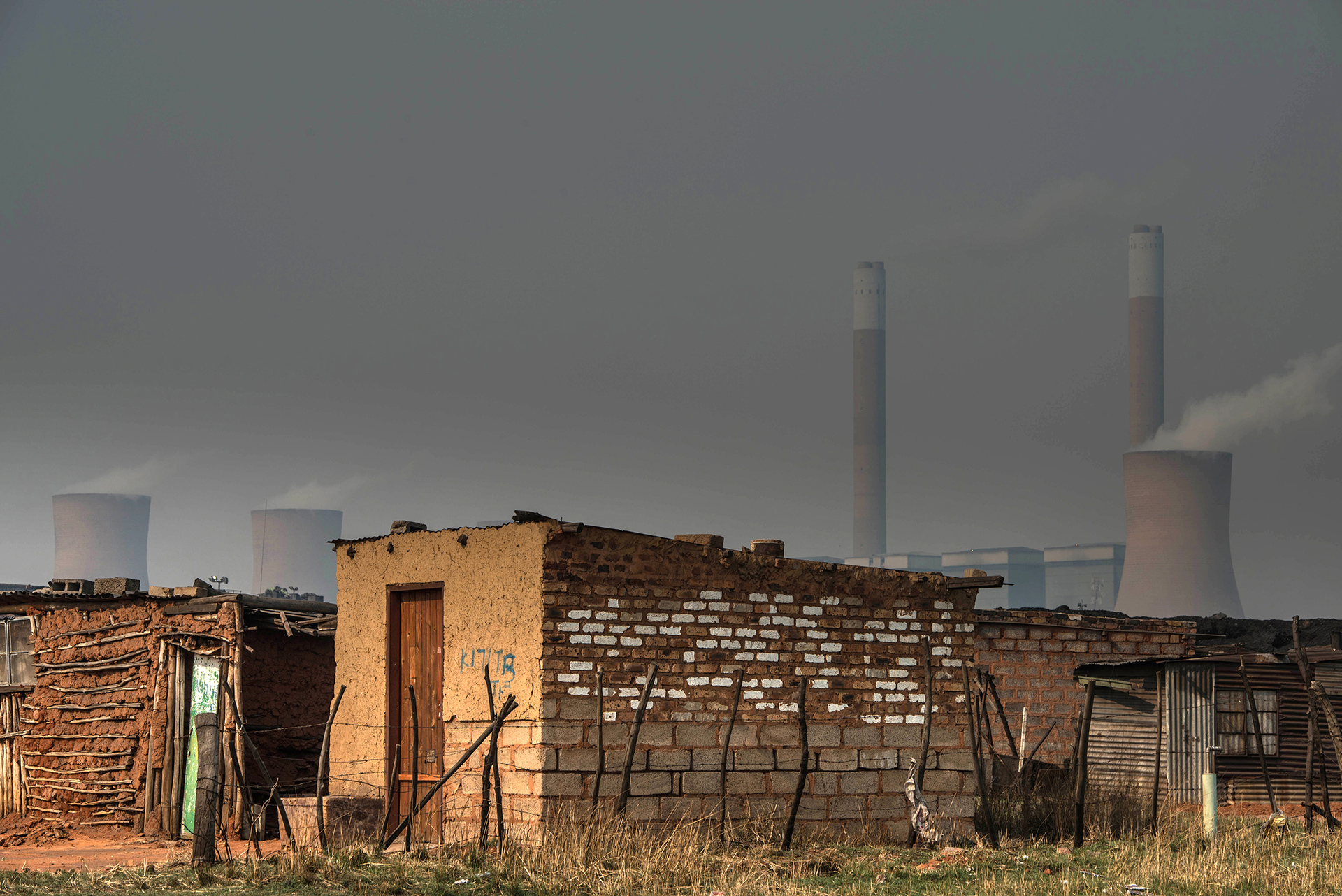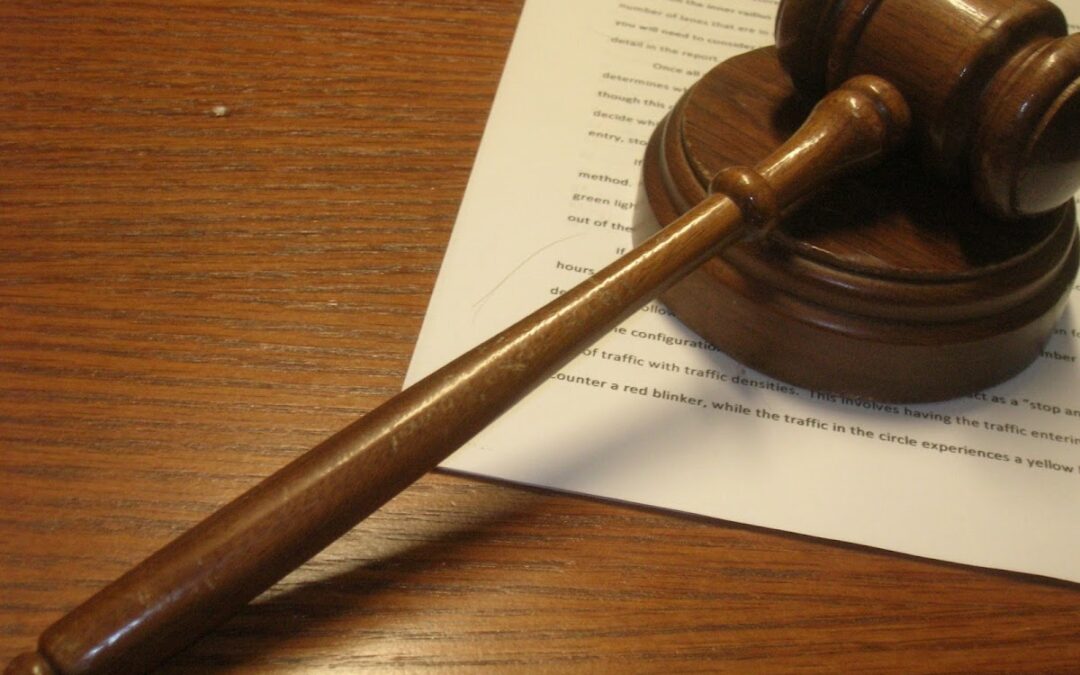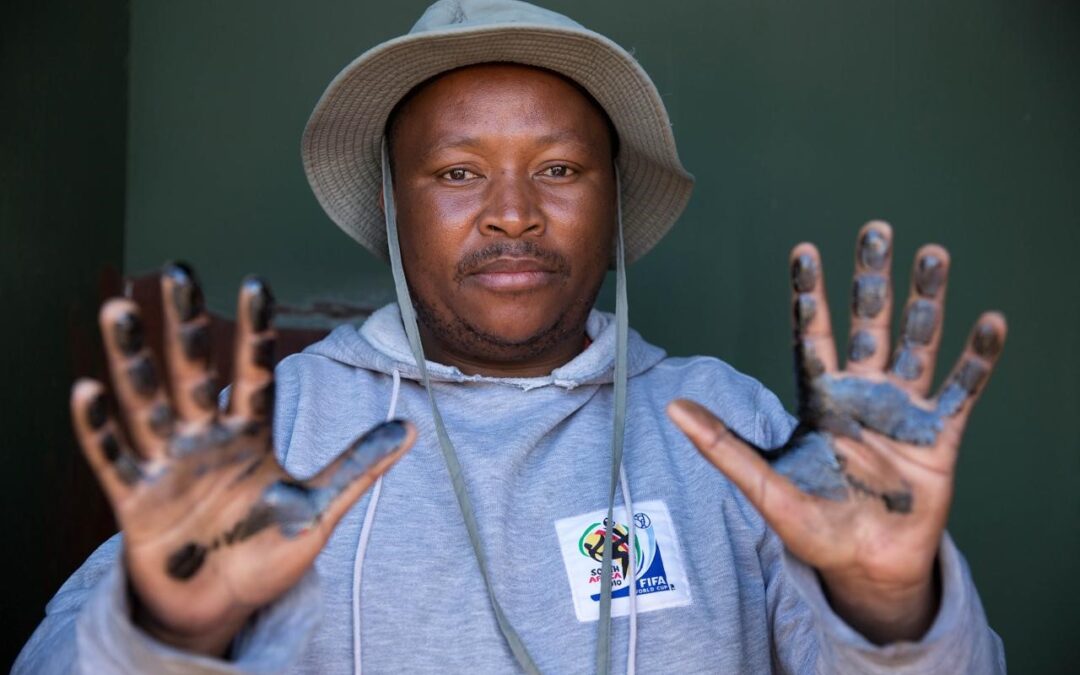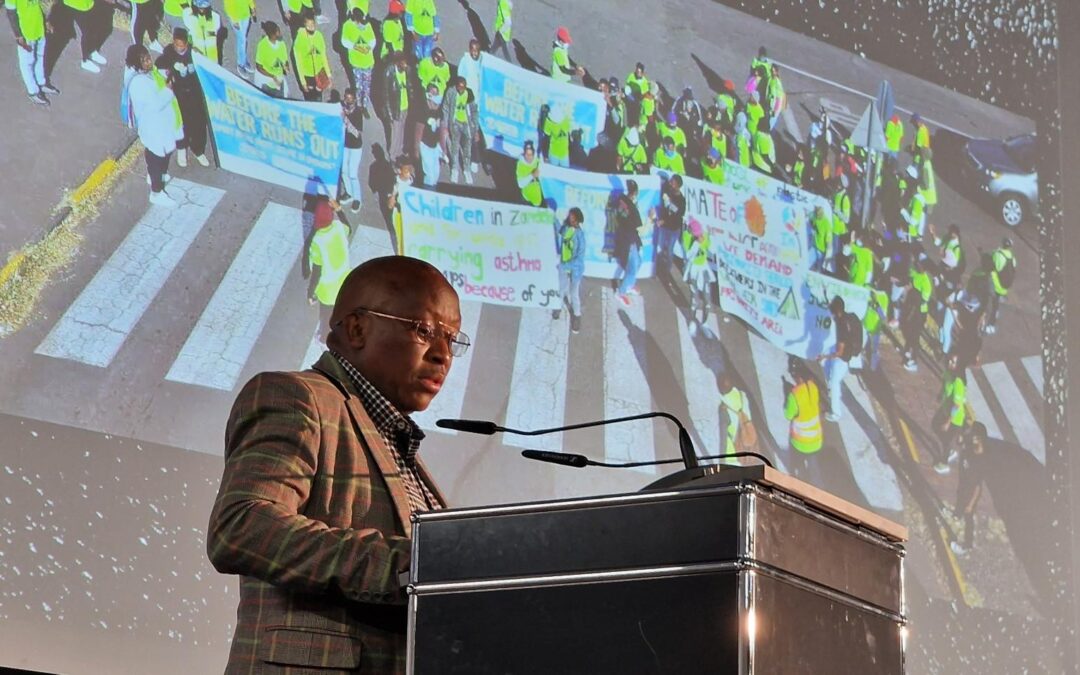
We welcome the President’s decision to take action on the energy crisis, and to bring an end to load-shedding. The plan leaves us with many questions that require clarification.
We support the decision to roll out the remaining renewable and battery storage allocation in the 2019 IRP – a decision that civil society organisations expressly called on the Department of Minerals and Energy (DMRE) and the Presidency to take in recent weeks. South Africa must build at least 5 gigawatts of renewable energy every year just to meet the demand created by the unavoidable retirement of Eskom’s ageing coal plants – this is beyond the renewable capacity even envisaged in the IRP.
The decades of delay in taking the “bold, courageous and decisive action” the President refers to, and the crisis which has resulted, cannot be used as a justification for rolling out new fossil fuel developments like gas, nor to promote or accelerate privatisation of all new electricity generation, which would risk the further downward spiral of Eskom as a public utility.
No new fossil fuels
The President’s plan appears to use the energy crisis to force gas into the electricity generation mix, without consideration of its high costs, harmful climate and health impacts and serious financial risks.
Gas is not a “transitional” fuel. Numerous studies [1] have confirmed that investing in gas developments poses a significant risk of lock-in when cheaper alternatives are available and will continue to become cheaper. As a result, any new gas infrastructure faces a significant risk of becoming a stranded asset. There are currently numerous gas to power projects seeking authorisation, including the controversial Karpowership projects which are subject to various legal challenges. We do not accept that the need to address the energy crisis can be used to greenlight these risky gas developments.
Gas power stations – and leaks and venting in the gas supply change – emit substantial greenhouse gases. They do not viably and safely replace coal-fired power, but rather displace new renewables.
Gas availability is a concern, and there is near certainty that the cost of gas energy will be higher than renewable wind and solar energy, many of the costs of which are essentially frozen once these plants are built. Gas prices are volatile, subject to price and exchange rate fluctuations. Forcing gas into the energy mix will inevitably increase the cost of electricity to consumers, and will result in SA energy needs being tied to a global gas market as imports will be required.
Government has responded to business sector demands to remove the 100MW limit on “embedded” generation. This does not appear to expressly exclude gas or even coal projects. We oppose all new fossil fuel power projects because they are polluting, expensive and contribute to climate change.
In Eskom’s plan for “repowering and repurposing” power stations scheduled for shutdown soon, it proposes to build just 400 megawatts (MW) of solar power, at an estimated total cost of R6,4 billion. But it proposes building new closed cycle gas turbines on these sites with a total capacity of 5750 MW, at an estimated cost of R198 billion. The solar plants could be completed within 24 months. Converting these plants to gas and the construction of the necessary gas supply infrastructure would take at least three years.
Regulatory framework
The president’s plan is replete with references to “cutting red tape” for new energy projects. We support efficient and effective regulation, but we do not support circumventing the essential assessment of environmental, climate and social impacts before projects commence – and even more so for all fossil fuels projects, like gas. South Africa is extremely vulnerable to catastrophic climate change [2] and must act to protect people and ecosystems from these impacts – including, in particular, our resilience to drought and other extreme weather events.
We also note that “embedded” generation is used in the President’s plan to include off-site plants with the power being “wheeled” through the grid in private deals between big corporate producers and consumers of power. The producers may sell power to multiple customers, and projects can be as big as they like, subject only to technical limits. The provision of grid services at a nominal charge, including wheeling, stability and energy storage services will in effect subsidise these corporate producers. Will these deals be done outside of the regulatory framework, or be subject to the integrated resource plan (IRP) or any other electricity regulation? Will the IRP now be about what’s left of the public system? And if loadshedding is required in future, will the private power customers be exempt?
Also, as much as they may put additional power on the grid, these will also take up publicly funded grid capacity for private supply deals.
Rooftop solar for poor South Africans
We are encouraged that the president wants all South Africans to be part of the solution. In practical terms, this is about energy efficiency on the one hand, and rooftop solar on the other.
To date, public housing has been put up without regard for the basics of thermal efficiency. Most RDP houses are also badly built and cracking up. Whether people live in RDP houses or shacks, they freeze in winter and bake in summer. The solar water heating program which would have reduced grid energy demand, including peak demand, and provided the poor with free hot water, was abandoned years ago. We agree that business needs to reduce its consumption through greater energy efficiency, but hope that the majority of people will also be enabled to be energy efficient and comfortable.
We have long advocated for a system where the bulk of generation is dispersed through households, community scale mini-grids and municipal scale local grids backed up by the national grid. We therefore welcome the promise of support for rooftop solar for households. However, the majority of people in South Africa are poor and their rooftops are not strong enough to support a solar panel. We look forward to seeing how support for rooftop solar will be extended to the poor majority of people, including through the offer of an equitable feed-in tariff.
Eskom, renewables and debt
Eskom is being allowed, or Eskom is choosing, to build only 500 MW of renewables, and there seems to be an implicit acceptance of its repurposing plans in the President’s speech.
Nearly all renewable new power generation, which is low-cost and highly profitable relative to the current cost of power, will be privatised under these proposals. Eskom will not be building these low-cost renewables, losing an opportunity to lower its overall generating costs. The major share of its generating capacity will continue to be high-cost and unreliable coal power, and, if it proceeds with its gas-power plans, even higher gas-based costs. Eskom will continue its downward spiral, and electricity prices will continue to increase, to the detriment of the South African public.
The urgent question of Eskom’s debt has been passed to Treasury, but we will have to wait for the October budget statement to hear how they will address it. This is not the first time that Treasury has been mandated to find a solution. It has not done so to date. We trust that they will now put forward a credible plan that is not tied up with austerity budgeting.
END
[1] Meridian Economics (June 2022) Hot Air About Gas: An Economic Analysis of the Scope and Role for Gas-Fired Power Generation in South Africa. See report at: https://meridianeconomics.co.za/wp-content/uploads/2022/06/Hot-Air-About-Gas.pdf and International Institute for Sustainable Development (March 2022) Gas Pressure: Exploring the case for gas-fired power in South Africa. See report at: https://www.iisd.org/system/files/2022-03/south-africa-no-need-for-gas.pdf
[2] As confirmed by government in our National Climate Change Response White Paper (2011) and the Nationally Determined Contribution update (2021)
FOR EDITORS:
FOR MORE INFORMATION, OR TO ARRANGE AN INTERVIEW, PLEASE CONTACT:
Tsepang Molefe, , 27 74 405 1257
Life After Coal/Impilo Ngaphandle Kwamalahle is a joint campaign by Earthlife Africa Johannesburg, groundWork, and the Centre for Environmental Rights that aims to discourage the development of new coal-fired power stations and mines; reduce emissions from existing coal infrastructure and encourage a coal phase-out; and enable a broad and inclusive just transition to sustainable energy systems for the people.
www.lifeaftercoal.org.za
groundWork is a non-profit environmental justice service and developmental organization working primarily in Southern Africa in the areas of Climate & Energy Justice, Coal, Environmental Health, Global Green and Healthy Hospitals, and Waste.
www.groundwork.org.za
The Centre for Environmental Rights is a non-profit organisation and law clinic based in Cape Town, South Africa. As a group of activist lawyers, the CER helps communities and civil society organisations in South Africa to realise our Constitutional right to a healthy environment by advocating and litigating for environmental justice.
www.cer.org.za
Earthlife Africa is a non-profit organisation, founded in Johannesburg, South Africa, in 1988, that seeks a better life for all people without exploiting other people or degrading their environment.
www.earthlife.org.za



